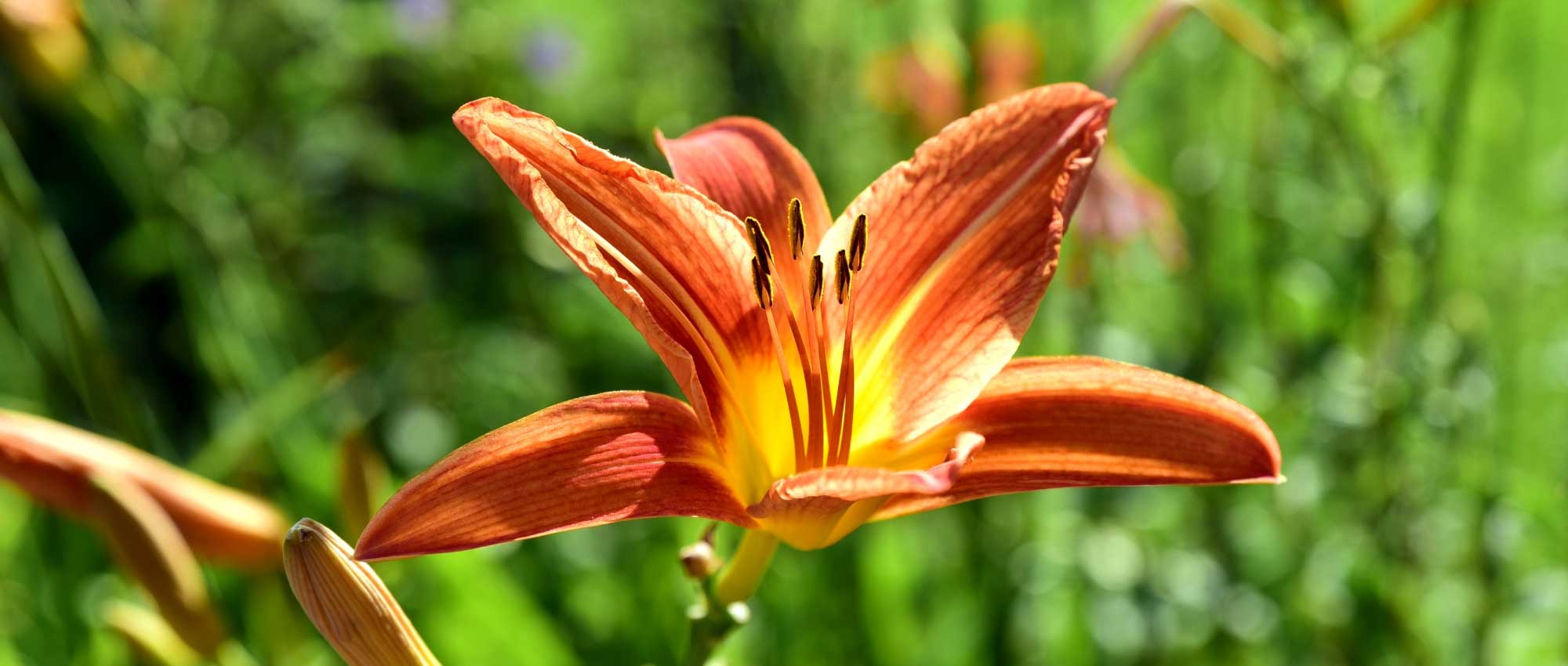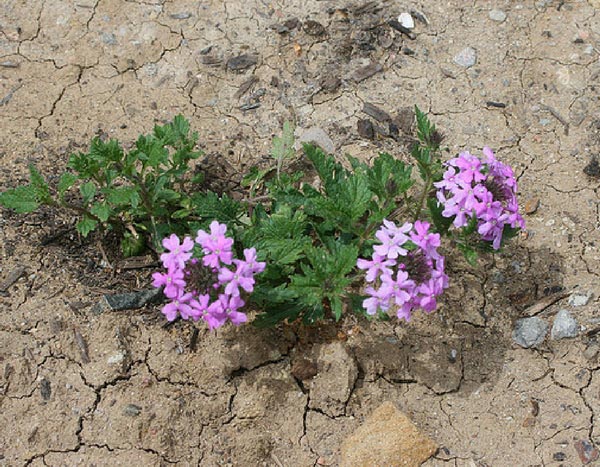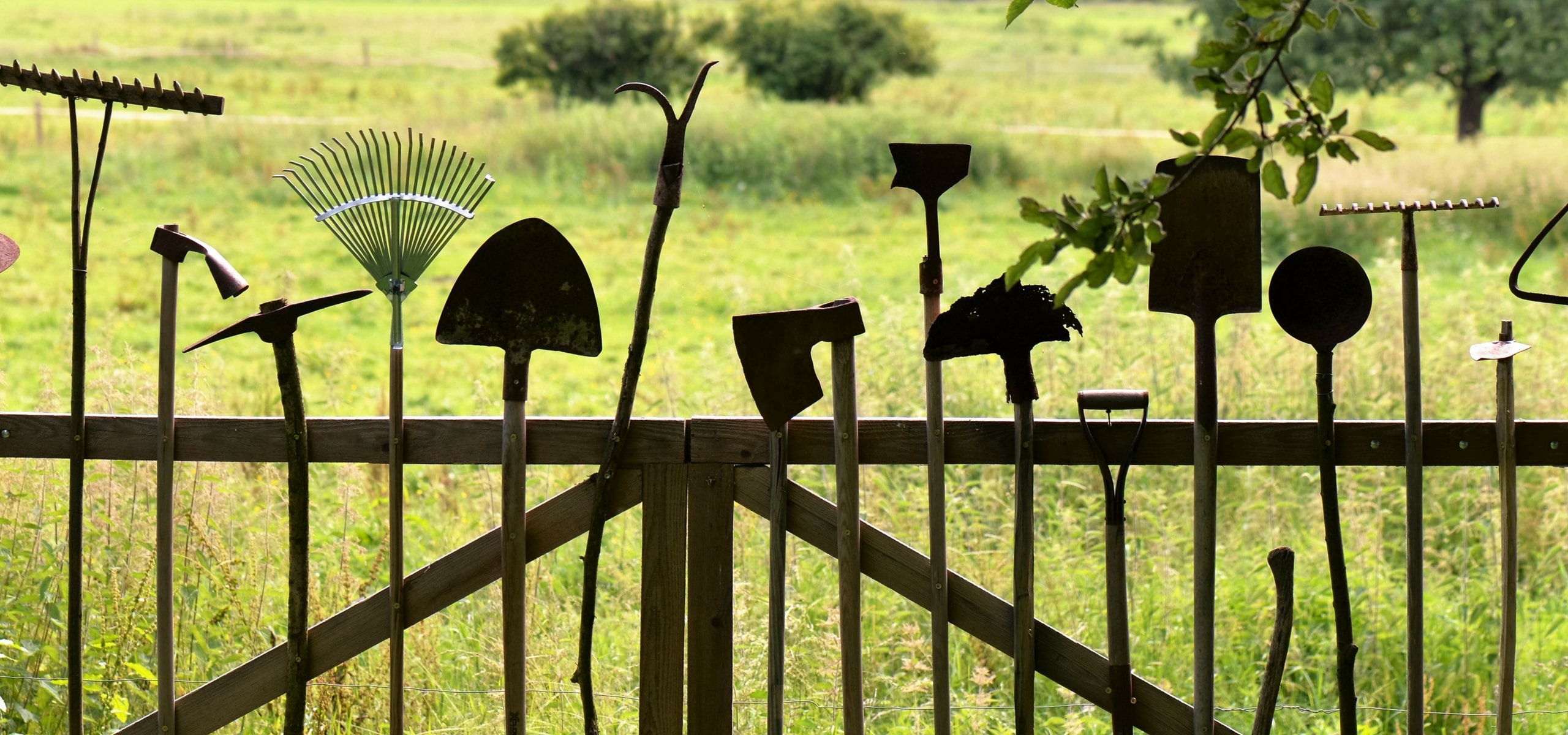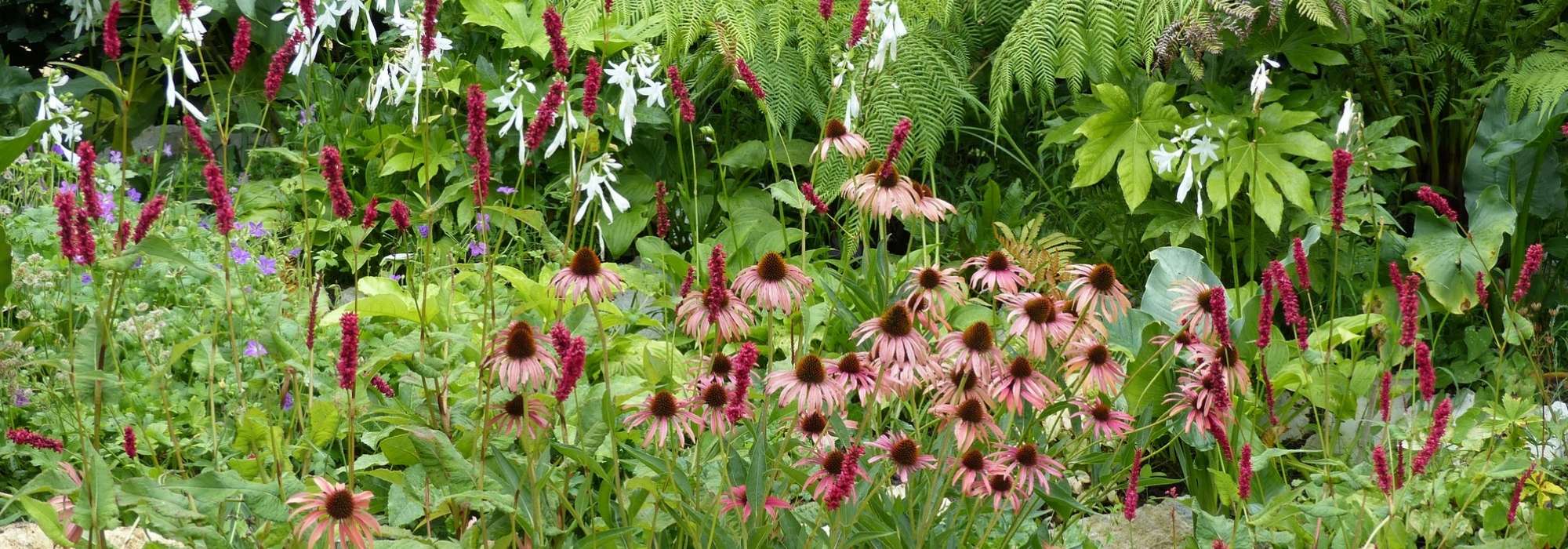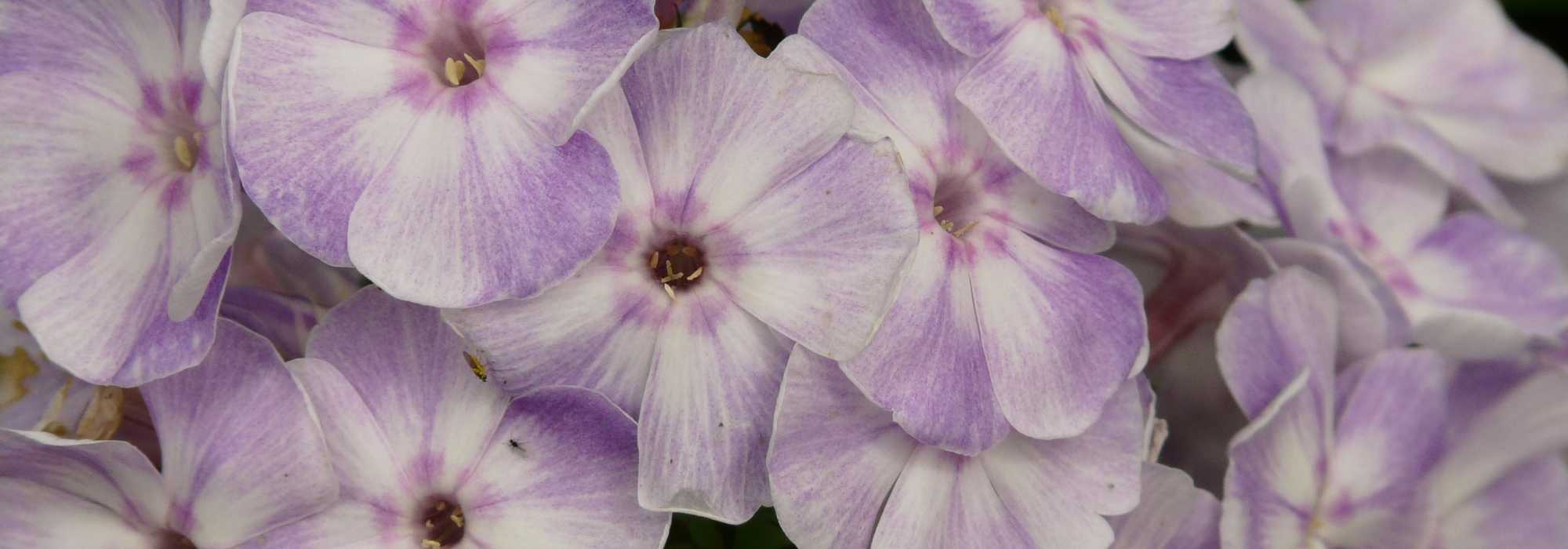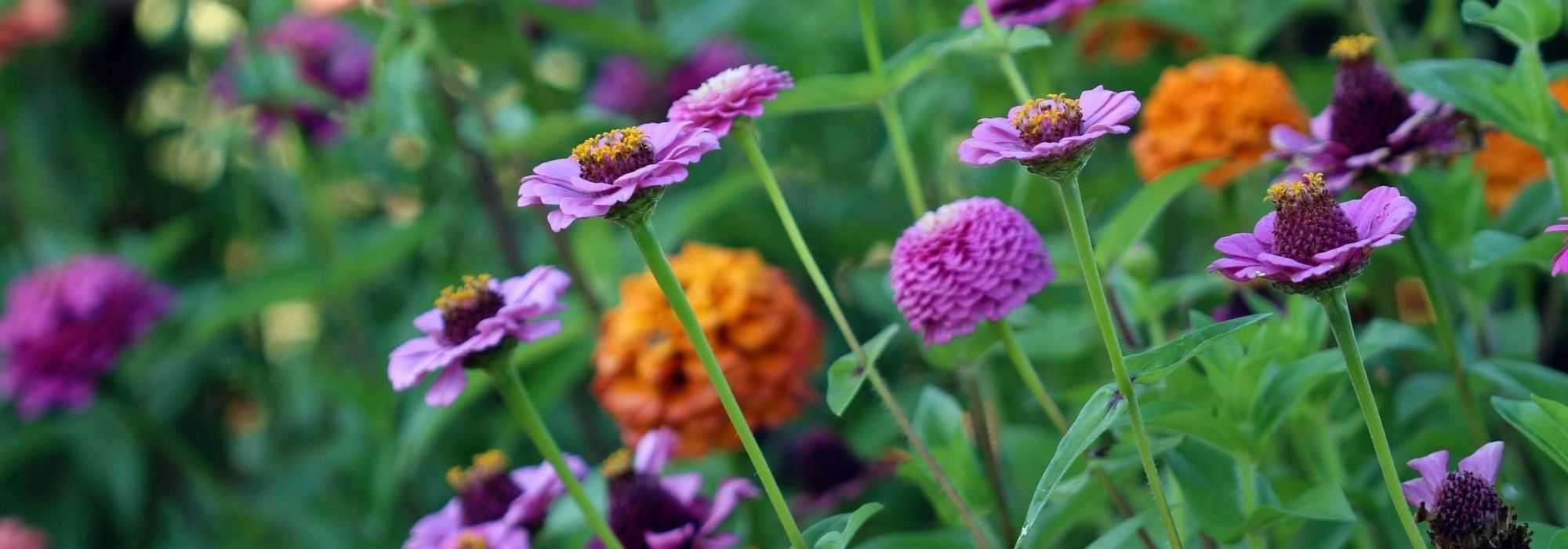Alocasia melo will adorn an interior with a minimalist, tropical, or even industrial style. Placed in a raw terracotta planter or a matte black metal container, it becomes a centrepiece in a bright but not sunny corner of a living room or bedroom. For a more contemporary touch, pair it with plants grown in textured ceramic pots or macramé hangers for a boho vibe. This elephant ear also pairs beautifully with other tropical plants with similar needs, such as Alocasia 'Polly' with its glossy, arrow-shaped leaves or Philodendron gloriosum with a velvety texture. Together, they create a true green oasis, perfect for a relaxation space or a sunroom bathed in soft light.
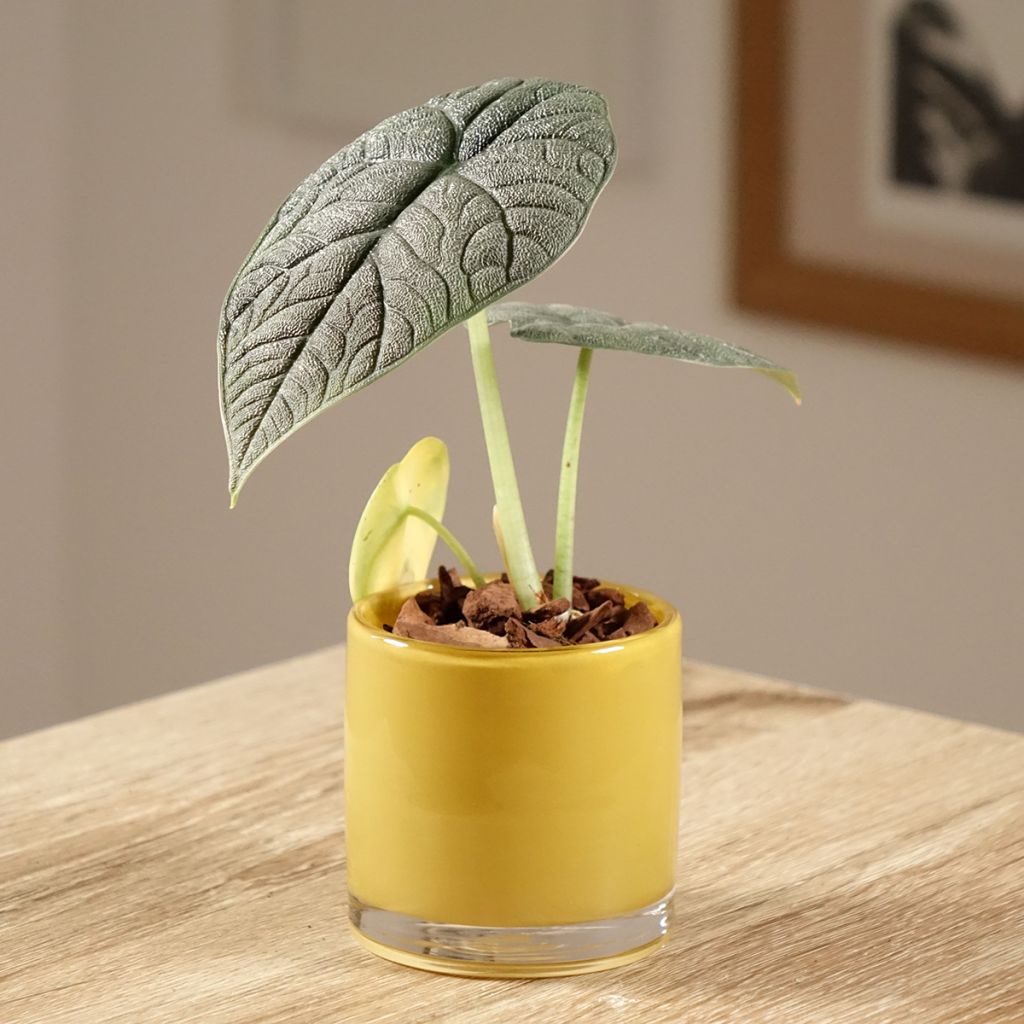

Alocasia melo - Elephant's ear
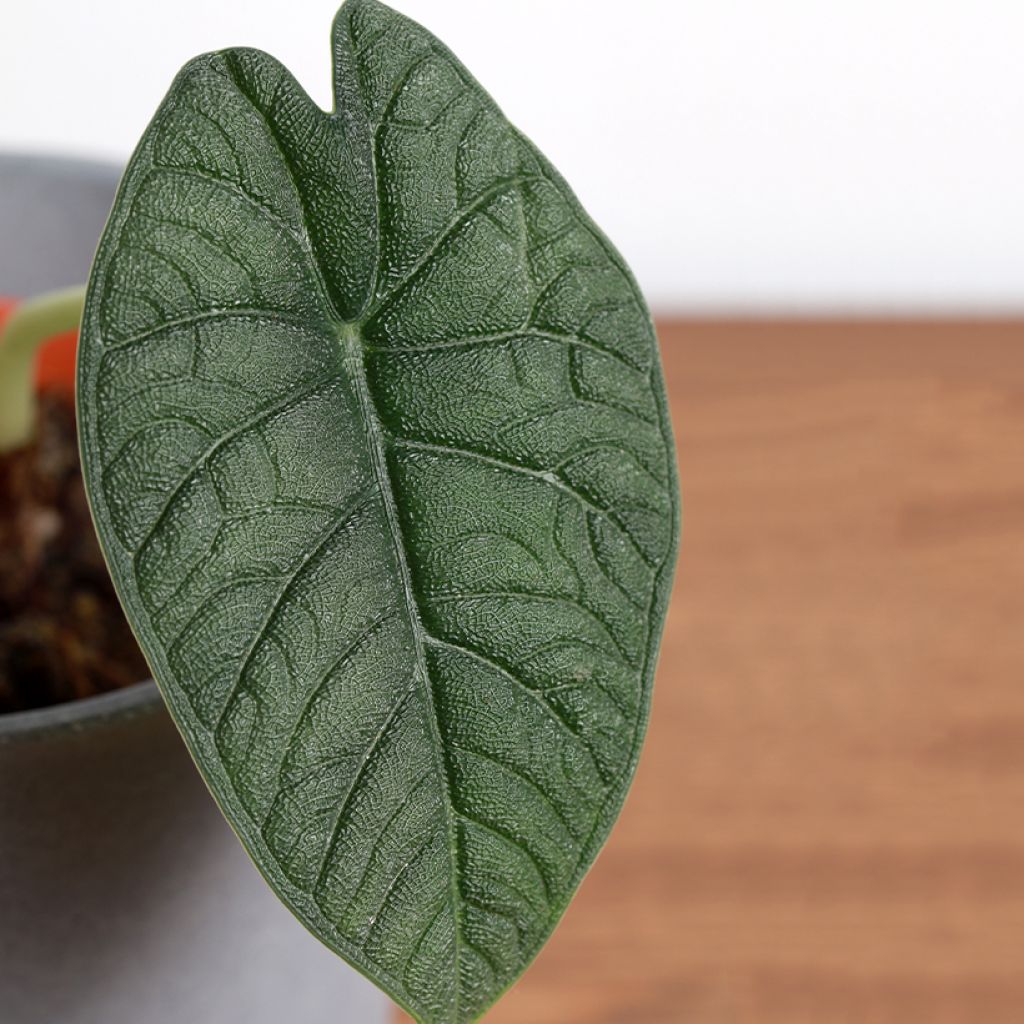

Alocasia melo - Elephant's ear
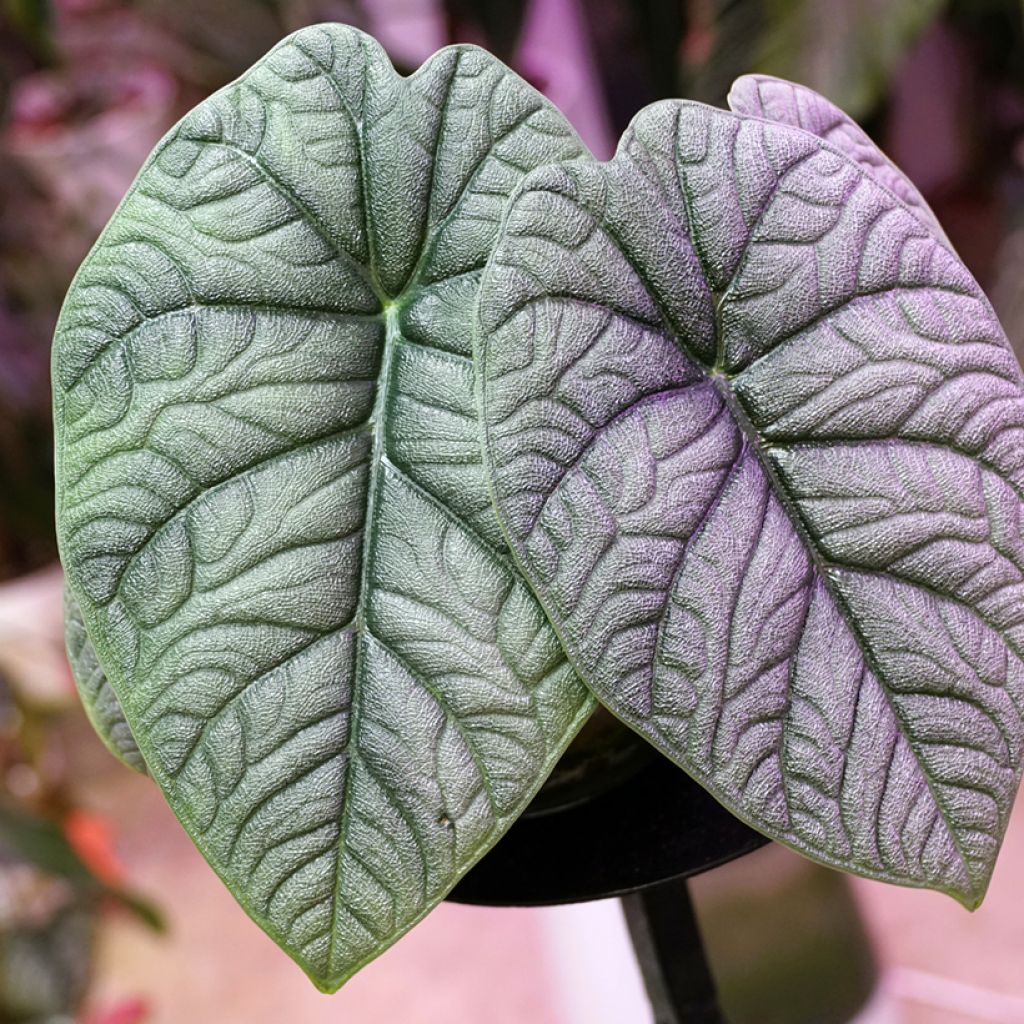

Alocasia melo - Elephant's ear
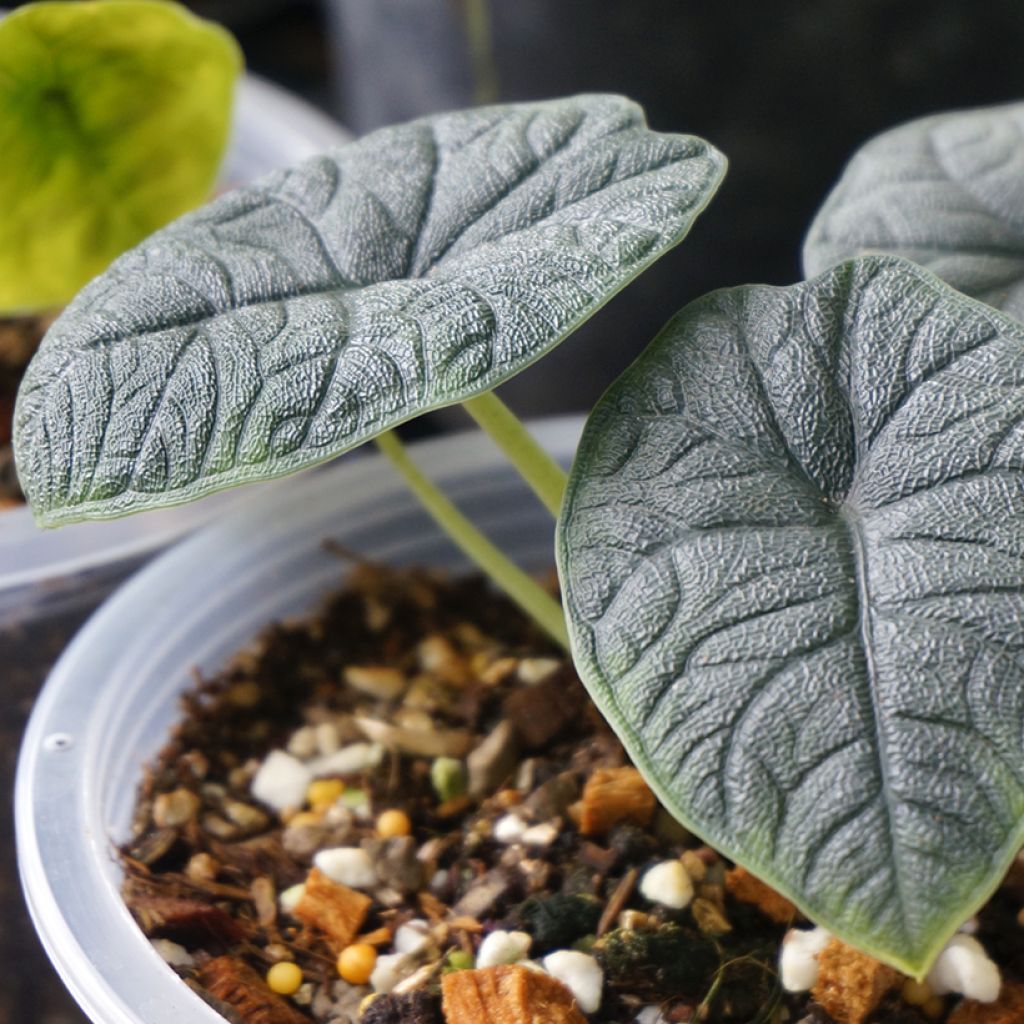

Alocasia melo - Elephant's ear
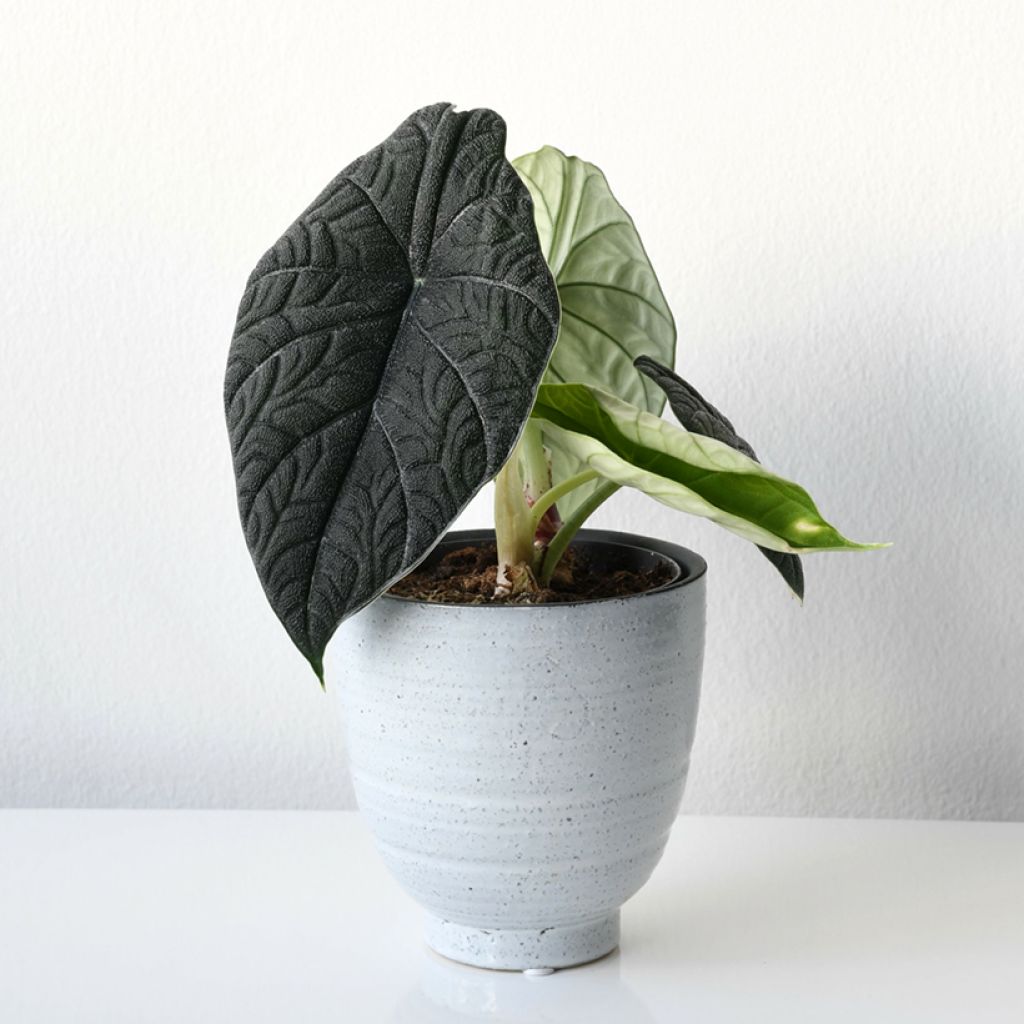

Alocasia melo - Elephant's ear
Share your pictures?
Hide split images
New arrival
Alocasia melo - Elephant's ear
Alocasia melo
Giant taro, Elephant's ears plant
Be the first to leave a review
Special offer!
Receive a €20 voucher for any order over €90 (excluding delivery costs, credit notes, and plastic-free options)!
1- Add your favorite plants to your cart.
2- Once you have reached €90, confirm your order (you can even choose the delivery date!).
3- As soon as your order is shipped, you will receive an email containing your voucher code, valid for 3 months (90 days).
Your voucher is unique and can only be used once, for any order with a minimum value of €20, excluding delivery costs.
Can be combined with other current offers, non-divisible and non-refundable.
Home or relay delivery (depending on size and destination)
Schedule delivery date,
and select date in basket
This plant carries a 30 days recovery warranty
More information
We guarantee the quality of our plants for a full growing cycle, and will replace at our expense any plant that fails to recover under normal climatic and planting conditions.
A compact tropical species native to Malaysia, prized for its thick, dark green leaves with a rough texture and deep veins. Ideal for small spaces, this indoor plant prefers bright indirect light, high humidity, and warm temperatures between 15 and 29°C. A well-draining soil, enriched with perlite or orchid bark, suits it best. With proper care, it will become a star in your home.
Watering frequency
Moderate (once a week)
Indoor exposure
Indirect bright light
Benefits and advantages
Jungle effect
Benefits and advantages
Graphic foliage
Description
Alocasia melo is an elephant ear plant also known as Alocasia rugosa due to its thick, veined, rough-textured leaves. This indoor plant originates from Malaysia and Borneo. With its unusual architectural appeal and deep green colour, it fits perfectly into contemporary, tropical, or minimalist decor. This compact plant is ideal for enhancing small interior spaces such as a living room or office. To cultivate it successfully, provide indirect light and high humidity: a suitable environment is key to its thriving growth.
Alocasia melo is a tropical perennial native to the state of Sabah in Malaysia. Belonging to the Araceae family, this botanical species is characterised by its thick, dark green, deeply veined leaves with a waffled and rough texture. Grown in pots indoors, the plant typically reaches a maximum height of 50 cm and a spread of 40 cm. Although flowering is rare indoors, this variety occasionally produces small white spathes with little ornamental value. In the wild, this plant grows in rich, well-drained soil under dense, humid canopy cover. These conditions explain its specific needs: filtered light, high humidity (around 60-70%), and a constant temperature between 15 and 29°C. Its leaves and stems contain toxic compounds that may cause irritation if ingested.
Report an error about the product description
Alocasia melo - Elephant's ear in pictures


Alocasia melo - Elephant's ear (Foliage)


Alocasia melo - Elephant's ear (Plant habit)
Foliage
Foliage colour
dark green
Foliage description
Waffled, veined
Foliage persistence
Evergreen
Plant habit
Growth habit
Dressed
Height at maturity
40 cm
Spread at maturity
35 cm
Growth rate
slow
Flowering
Flower colour
insignificant
Inflorescence
Spadix
Botanical data
Genus
Alocasia
Species
melo
Family
Araceae
Other common names
Giant taro, Elephant's ears plant
Origin
Cultivar or hybrid
Safety measures
Potential risks
Plant that can cause skin and mucous membrane reactions
Toxic plant
Irritating sap
Product reference
•
23596
atteintescutaneomuqueuses
Cette plante peut provoquer l'apparition de réactions cutanées indésirables, une atteinte des yeux, ou des difficultés respiratoires si elle est ingérée.
Ne la plantez pas là où de jeunes enfants peuvent évoluer. Evitez tout contact avec la peau: privilégiez l'emploi de gants pour la manipuler. En cas de contact, lavez-vous soigneusement les mains et rincez abondamment à l'eau la zone concernée. Lavez les vêtements entrés en contact. En cas de réaction cutanée, contactez votre médecin ou le centre antipoison le plus proche de chez vous. En cas d'atteinte étendue ou de difficultés respiratoires, appelez immédiatement le 15 ou le 112.Pensez à conserver l'étiquette de la plante, à la photographier ou à noter son nom, afin de faciliter le travail des professionnels de santé.
Davantage d'informations sur https://plantes-risque.info
Location
Avoid exposing it directly to sunlight or draughts, as this could scorch its thick leaves.
Location
Indoor exposure
Indirect bright light
For which room?
Lounge, Bathroom, Veranda
Growth habit
Dressed
Height at maturity
40 cm
Spread at maturity
35 cm
Growth rate
slow
Low temperature tolerance
>15°C (greenhouse), >20°C (tropical greenhouse)
Humidity level
High (60-80%)
Maintenance and care
Watering tips
Water moderately once a week, ensuring the compost is moist but never waterlogged. Mist regularly to maintain high humidity.
Potting advice, substrates and fertilisers
Repot every 2 years, in spring.
Mix well-draining potting compost with perlite or orchid bark for good aeration. Add clay pebbles at the bottom of the pot to prevent water stagnation.
Apply a fertiliser for green plants, rich in nitrogen (NPK 10-5-5), once a month during the growth period (spring and summer). Reduce in autumn and winter.
Houseplant care
Clean the leaves regularly with a soft cloth to remove dust and maintain their shine.
Remove yellowed, stained or damaged leaves.
Disease and pest advice
To combat scale insects, clean the leaf with a cloth soaked in soapy water or applied neem oil.
Maintenance and care
Watering frequency
Moderate (once a week)
Fogging
2 to 3 times a week
Type of soil
Draining soil, Orchid potting soil
Pests and diseases
Mealybugs, Red spider mites, Rots
Susceptibility to diseases
High
Ease of cultivation
Experienced
Planting & care advice
This item has not been reviewed yet - be the first to leave a review about it.
Leave a review →
Share your review
Haven't found what you were looking for?
Hardiness is the lowest winter temperature a plant can endure without suffering serious damage or even dying. However, hardiness is affected by location (a sheltered area, such as a patio), protection (winter cover) and soil type (hardiness is improved by well-drained soil).

Photo Sharing Terms & Conditions
In order to encourage gardeners to interact and share their experiences, Promesse de fleurs offers various media enabling content to be uploaded onto its Site - in particular via the ‘Photo sharing’ module.
The User agrees to refrain from:
- Posting any content that is illegal, prejudicial, insulting, racist, inciteful to hatred, revisionist, contrary to public decency, that infringes on privacy or on the privacy rights of third parties, in particular the publicity rights of persons and goods, intellectual property rights, or the right to privacy.
- Submitting content on behalf of a third party;
- Impersonate the identity of a third party and/or publish any personal information about a third party;
In general, the User undertakes to refrain from any unethical behaviour.
All Content (in particular text, comments, files, images, photos, videos, creative works, etc.), which may be subject to property or intellectual property rights, image or other private rights, shall remain the property of the User, subject to the limited rights granted by the terms of the licence granted by Promesse de fleurs as stated below. Users are at liberty to publish or not to publish such Content on the Site, notably via the ‘Photo Sharing’ facility, and accept that this Content shall be made public and freely accessible, notably on the Internet.
Users further acknowledge, undertake to have ,and guarantee that they hold all necessary rights and permissions to publish such material on the Site, in particular with regard to the legislation in force pertaining to any privacy, property, intellectual property, image, or contractual rights, or rights of any other nature. By publishing such Content on the Site, Users acknowledge accepting full liability as publishers of the Content within the meaning of the law, and grant Promesse de fleurs, free of charge, an inclusive, worldwide licence for the said Content for the entire duration of its publication, including all reproduction, representation, up/downloading, displaying, performing, transmission, and storage rights.
Users also grant permission for their name to be linked to the Content and accept that this link may not always be made available.
By engaging in posting material, Users consent to their Content becoming automatically accessible on the Internet, in particular on other sites and/or blogs and/or web pages of the Promesse de fleurs site, including in particular social pages and the Promesse de fleurs catalogue.
Users may secure the removal of entrusted content free of charge by issuing a simple request via our contact form.
The flowering period indicated on our website applies to countries and regions located in USDA zone 8 (France, the United Kingdom, Ireland, the Netherlands, etc.)
It will vary according to where you live:
- In zones 9 to 10 (Italy, Spain, Greece, etc.), flowering will occur about 2 to 4 weeks earlier.
- In zones 6 to 7 (Germany, Poland, Slovenia, and lower mountainous regions), flowering will be delayed by 2 to 3 weeks.
- In zone 5 (Central Europe, Scandinavia), blooming will be delayed by 3 to 5 weeks.
In temperate climates, pruning of spring-flowering shrubs (forsythia, spireas, etc.) should be done just after flowering.
Pruning of summer-flowering shrubs (Indian Lilac, Perovskia, etc.) can be done in winter or spring.
In cold regions as well as with frost-sensitive plants, avoid pruning too early when severe frosts may still occur.
The planting period indicated on our website applies to countries and regions located in USDA zone 8 (France, United Kingdom, Ireland, Netherlands).
It will vary according to where you live:
- In Mediterranean zones (Marseille, Madrid, Milan, etc.), autumn and winter are the best planting periods.
- In continental zones (Strasbourg, Munich, Vienna, etc.), delay planting by 2 to 3 weeks in spring and bring it forward by 2 to 4 weeks in autumn.
- In mountainous regions (the Alps, Pyrenees, Carpathians, etc.), it is best to plant in late spring (May-June) or late summer (August-September).
The harvesting period indicated on our website applies to countries and regions in USDA zone 8 (France, England, Ireland, the Netherlands).
In colder areas (Scandinavia, Poland, Austria...) fruit and vegetable harvests are likely to be delayed by 3-4 weeks.
In warmer areas (Italy, Spain, Greece, etc.), harvesting will probably take place earlier, depending on weather conditions.
The sowing periods indicated on our website apply to countries and regions within USDA Zone 8 (France, UK, Ireland, Netherlands).
In colder areas (Scandinavia, Poland, Austria...), delay any outdoor sowing by 3-4 weeks, or sow under glass.
In warmer climes (Italy, Spain, Greece, etc.), bring outdoor sowing forward by a few weeks.






























